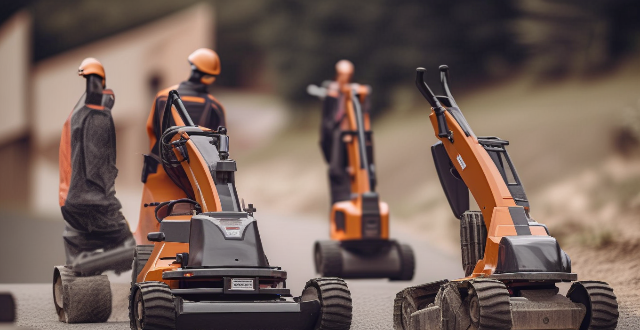DC brushed motors in robotics offer advantages such as affordability, simple maintenance, and high-speed efficiency. They provide predictable behavior and quick response to voltage changes, making them suitable for tasks requiring fast movements. However, they also present disadvantages including limited lifespan due to commutator wear, overheating issues, reduced torque at low speeds, electrical noise leading to EMI/RFI, higher power consumption, and potential size and weight constraints. The decision to use a brushed or brushless motor depends on the specific requirements of the robotic application.

Advantages of Using a DC Brushed Motor in Robotics
Simplicity and Low Cost
- Affordability: DC brushed motors are generally less expensive compared to brushless motors.
- Maintenance: They require less maintenance due to their simple design.
High Efficiency at High Speeds
- Performance: These motors often provide better efficiency and higher speeds, making them suitable for applications that need fast movements.
Control and Response
- Predictable Behavior: The control of brushed DC motors is straightforward, allowing for predictable behavior which can be an advantage in certain robotic tasks.
- Quick Response: They typically respond quickly to changes in voltage, resulting in immediate changes in speed.
Disadvantages of Using a DC Brushed Motor in Robotics
Commutator Wear and Tear
- Limited Lifespan: The brushes wear down over time, reducing the lifespan of the motor and requiring eventual replacement.
Overheating Issues
- Thermal Management: Brushed motors can generate more heat than brushless motors, necessitating better cooling solutions.
Efficiency at Low Speeds
- Reduced Torque: Brushed motors may not perform as well at low speeds or under heavy loads, where they can suffer from reduced torque and efficiency.
Electrical Noise and Interference
- EMI/RFI Issues: The brushes can cause electrical noise, potentially leading to electromagnetic interference (EMI) or radio frequency interference (RFI).
Power Consumption
- Higher Energy Use: Brushed motors might consume more power during operation compared to brushless motors, affecting the battery life in mobile robotic applications.
Size and Weight
- Bulkiness: For some robotic applications, the size and weight of brushed motors can be a disadvantage, especially when space and weight are critical factors.
In summary, while DC brushed motors offer simplicity and high-speed efficiency, they come with drawbacks such as limited operational lifespan, overheating issues, and potential efficiency problems at low speeds. The choice between using a brushed or brushless motor in robotics depends on the specific requirements of the application, including the importance of cost, efficiency, size, weight, and the environment in which the robot will operate.